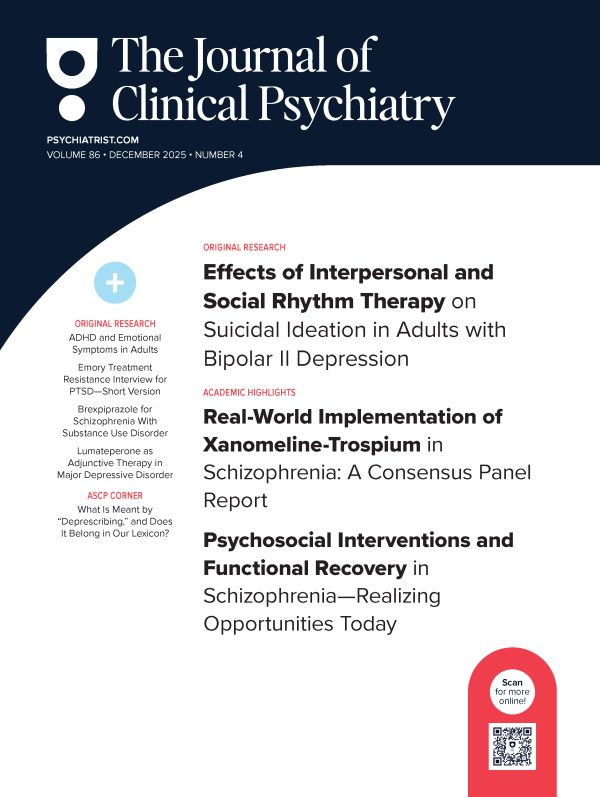Abstract
Background: Cognitive deficits are a core feature of early stages of schizophrenia. However, according to neurodevelopmental models, the extent to which chemokines and growth factors are involved in cognitive function remains debatable. We aimed to investigate whether homeostatic/inflammatory chemokines and growth factors are associated with cognitive impairment in patients with first-episode psychosis (FEP) in remission.
Methods: Fifty patients, 21 healthy siblings, and 24 controls participated in the study. The primary outcomes were associations between cognition and growth factors (brain-derived neurotrophic factor [BDNF] and vascular endothelial growth factor [VEGF]), homeostatic markers (CXCL12), and inflammatory chemokines (CCL2, CCL3, CX3CL1, and CCL11) using a whole-blood immunoassay procedure. Differences between the FEP group, siblings, and controls were also examined to understand distinct group profiles.
Results: The VEGF levels were significantly higher in the FEP group than in the control group. High VEGF levels are significantly associated with lower social cognition scores. Moreover, a post hoc hierarchical regression model explained 34.5% of the variance in social cognition (F11, 32 =1.533, P=.168), with inflammatory variables explaining 13.5% and VEGF showing statistical significance (β=−1.936, P=.022). No additional significant results were found for the other inflammatory biomarkers.
Conclusions: Our preliminary results suggest that an increase in VEGF might help preserve social cognition after first- episode psychosis. These findings might suggest that a compensatory mechanism could outweigh other VEGF- related hypotheses, such as blood-brain barrier opening and chronic neuroinflammation. However, this hypothesis requires further investigation to address the methodological challenges of determining chemokine levels and controlling for confounding variables.
J Clin Psychiatry 2025;86(3):24m15486
Author affiliations are listed at the end of this article.
Members Only Content
This full article is available exclusively to Professional tier members. Subscribe now to unlock the HTML version and gain unlimited access to our entire library plus all PDFs. If you’re already a subscriber, please log in below to continue reading.
References (67)

- Insel TR. Rethinking schizophrenia. Nature. 2010;468(7321):187–193. PubMed CrossRef
- Galderisi S, Bucci P, Mucci A, et al. Categorical and dimensional approaches to negative symptoms of schizophrenia: focus on long-term stability and functional outcome. Schizophr Res. 2013;147(1):157–162 PubMed CrossRef
- Pollak TA, Drndarski S, Stone JM, et al. The blood–brain barrier in psychosis. Lancet Psychiatry. 2018;5(1):79–92. PubMed CrossRef
- Bora E, Yalincetin B, Akdede BB, et al. Duration of untreated psychosis and neurocognition in first-episode psychosis: a meta-analysis. Schizophr Res. 2018;193:3–10. PubMed CrossRef
- Parellada E, Gassó P. Glutamate and microglia activation as a driver of dendritic apoptosis: a core pathophysiological mechanism to understand schizophrenia. Transl Psychiatry. 2021;11(1):271. PubMed CrossRef
- Müller N. Inflammation in schizophrenia: pathogenetic aspects and therapeutic considerations. Schizophr Bull. 2018;44(5):973–982.
- Upthegrove R, Khandaker GM. Cytokines, oxidative stress and cellular markers of inflammation in schizophrenia. Curr Top Behav Neurosci. 2020;44:49–66. PubMed CrossRef
- Ramsay H, Surcel HM, Björnholm L, et al. Associations between maternal prenatal C-reactive protein and risk factors for psychosis in adolescent offspring: findings from the Northern Finland Birth Cohort 1986. Schizophr Bull. 2021;47(3):766–775. PubMed CrossRef
- Rasile M, Lauranzano E, Faggiani E, et al. Maternal immune activation leads to defective brain-blood vessels and intracerebral hemorrhages in male offspring. EMBO J. 2022;41(23):e111192. PubMed CrossRef
- Nettis MA, Pariante CM, Mondelli V. Early-life adversity, systemic inflammation and comorbid physical and psychiatric illnesses of adult life. Curr Top Behav Neurosci. 2020;44:207–225. PubMed CrossRef
- Pollak TA, Drndarski S, Stone JM, et al. The blood-brain barrier in psychosis. Lancet Psychiatry. 2018;5(1):79–92. PubMed CrossRef
- Suvisaari J, Mantere O. Inflammation theories in psychotic disorders: a critical review. Infect Disord: Drug Targets. 2013;13(1):59–70. PubMed CrossRef
- Ragozzino D. CXC chemokine receptors in the central nervous system: role in cerebellar neuromodulation and development. J Neurovirol. 2002;8(6):559–572. PubMed CrossRef
- Raman D, Sobolik-Delmaire T, Richmond A. Chemokines in health and disease. Exp Cell Res. 2011;317(5):575–589. PubMed CrossRef
- Kelsven S, de la Fuente-Sandoval C, Achim CL, et al. Immuno-inflammatory changes across phases of early psychosis: the impact of antipsychotic medication and stage of illness. Schizophr Res. 2020;226:13–23.
- Pardo-de-Santayana G, Juncal-Ruiz M, Vázquez-Bourgon J, et al. Active psychosis and pro-inflammatory cytokines in first-episode of psychosis. J Psychiatr Res. 2021;134:150–157.
- Frydecka D, Krzystek-Korpacka M, Lubeiro A, et al. Profiling inflammatory signatures of schizophrenia: a cross-sectional and meta-analysis study. Brain Behav Immun. 2018;71:28–36. PubMed CrossRef
- Martínez-Cengotitabengoa M, Mac-Dowell KS, Leza JC, et al. Cognitive impairment is related to oxidative stress and chemokine levels in first psychotic episodes. Schizophr Res. 2012;137(1–3):66–72. PubMed
- Tran-Chi VL, Maes M, Nantachai G, et al. Cytokine dysregulation in amnestic mild cognitive impairment. Sci Rep. 2024;14(1):22486. PubMed CrossRef
- Johansson V, Jakobsson J, Fortgang RG, et al. Cerebrospinal fluid microglia and neurodegenerative markers in twins concordant and discordant for psychotic disorders. Eur Arch Psychiatry Clin Neurosci. 2017;267(5):391–402. PubMed CrossRef
- Najjar S, Pahlajani S, De Sanctis V, et al. Neurovascular unit dysfunction and blood-brain barrier hyperpermeability contribute to schizophrenia neurobiology: a theoretical integration of clinical and experimental evidence. Front Psychiatry. 2017;8:83. PubMed CrossRef
- Mohammadi A, Rashidi E, Amooeian VG. Brain, blood, cerebrospinal fluid, and serum biomarkers in schizophrenia. Psychiatry Res. 2018;265:25–38. PubMed CrossRef
- Requena-Ocaña N, Flores-Lopez M, Papaseit E, et al. Vascular endothelial growth factor as a potential biomarker of neuroinflammation and frontal cognitive impairment in patients with alcohol use disorder. Biomedicines. 2022;10(5):947.
- Argaw AT, Asp L, Zhang J, et al. Astrocyte-derived VEGF-A drives blood-brain barrier disruption in CNS inflammatory disease. J Clin Investig. 2012;122(7):2454–2468. PubMed CrossRef
- Chapouly C, Tadesse Argaw A, Horng S, et al. Astrocytic TYMP and VEGFA drive blood-brain barrier opening in inflammatory central nervous system lesions. Brain. 2015;138(Pt 6):1548–1567. PubMed CrossRef
- Nieto RR, Carrasco A, Corral S, et al. BDNF as a biomarker of cognition in schizophrenia/psychosis: an updated review. Front Psychiatry. 2021;12:662407. PubMed CrossRef
- Zhao Y, Xiao W, Chen K, et al. Neurocognition and social cognition in remitted first-episode schizophrenia: correlation with VEGF serum levels. BMC Psychiatry. 2019;19(1):403. PubMed CrossRef
- Chukaew P, Bunmak N, Auampradit N, et al. Correlation of BDNF, VEGF, TNF-α, and S100B with cognitive impairments in chronic, medicated schizophrenia patients. Neuropsychopharmacol Rep. 2022;42(3):281–287. PubMed CrossRef
- Chen P, Chen W, Xu L, et al. Decreased serum VEGF and NRG1β1 levels in male patients with chronic schizophrenia: VEGF correlation with clinical symptoms and cognitive deficits. J Psychiatr Res. 2024;176:85–92. PubMed CrossRef
- Su Q, Xuekelaiti Z, Ma H, et al. The associations between duration of untreated psychosis, growth factors, and neurocognition in patients with drug-naïve schizophrenia. Schizophr Res. 2024;274:113–120. PubMed CrossRef
- Yesilkaya UH, Gica S, Menekseoglu PO, et al. Can the imbalance between neurotrophic and apoptotic proteins Be the “Beware the ides of March” for unaffected relatives of schizophrenia patients? Mol Neurobiol. 2022;59(12):7413–7422. PubMed CrossRef
- Stanca S, Rossetti M, Bokulic Panichi L, et al. The cellular dysfunction of the brain-blood barrier from endothelial cells to astrocytes: the pathway towards neurotransmitter impairment in schizophrenia. Int J Mol Sci. 2024;25(2):1250. PubMed CrossRef
- Stuart MJ, Baune BT. Chemokines and chemokine receptors in mood disorders, schizophrenia, and cognitive impairment: a systematic review of biomarker studies. Neurosci Biobehav Rev. 2014;42:93–115. PubMed CrossRef
- Chamera K, Trojan E, Szuster-Głuszczak M, et al. The potential role of dysfunctions in neuron-microglia communication in the pathogenesis of brain disorders. Curr Neuropharmacol. 2020;18(5):408–430. PubMed
- Noto C, Maes M, Ota VK, et al. High predictive value of immune-inflammatory biomarkers for schizophrenia diagnosis and association with treatment resistance. World J Biol Psychiatry. 2015;16(6):422–429. PubMed CrossRef
- Roomruangwong C, Noto C, Kanchanatawan B, et al. The role of aberrations in the immune-inflammatory response system (IRS) and the compensatory immune-regulatory reflex system (CIRS) in different phenotypes of schizophrenia: the IRS-CIRS theory of schizophrenia. Mol Neurobiol. 2020;57(2):778–797. PubMed CrossRef
- Toritsuka M, Kimoto S, Muraki K, et al. Deficits in microRNA-mediated Cxcr4/Cxcl12 signaling in neurodevelopmental deficits in a 22q11 deletion syndrome mouse model. Proc Natl Acad Sci U S A. 2013;110(43):17552–17557. PubMed CrossRef
- Murphy BP, Pang TY, Hannan AJ, et al. Vascular endothelial growth factor and brain-derived neurotrophic factor in quetiapine treated first-episode psychosis. Schizophr Res Treat. 2014;2014:719395. PubMed CrossRef
- American Psychiatric Association. Diagnostic and Statistical Manual of Mental Disorders (DSM-5). 5th ed. American Psychiatric Publishing; 2013.
- Andreasen NC, Flaum M, Arndt S. The Comprehensive Assessment of Symptoms and History (CASH): an instrument for assessing diagnosis and psychopathology. Arch Gen Psychiatry. 1992;49(8):615–623. PubMed CrossRef
- Cuesta MJ, Sánchez-Torres AM, Moreno-Izco L, et al. Neurocognitive correlates of the varied domains of outcomes at 20 year follow-up of first-episode psychosis. Psychiatry Res. 2022;318:114933. PubMed
- Ho BC, Andreasen NC, Ziebell S, et al. Long-term antipsychotic treatment and brain volumes: a longitudinal study of first-episode schizophrenia. Arch Gen Psychiatry. 2011;68(2):128–137. PubMed CrossRef
- Green MF, Nuechterlein KH, Gold JM, et al. Approaching a consensus cognitive battery for clinical trials in schizophrenia: the NIMH-MATRICS conference to select cognitive domains and test criteria. Biol Psychiatry. 2004;56(5):301–307. PubMed CrossRef
- Green MF, Nuechterlein KH. The MATRICS initiative: developing a consensus cognitive battery for clinical trials. Schizophr Res. 2004;72(1):1–3. PubMed CrossRef
- Cuesta MJ, Moreno-Izco L, Ribeiro M, et al. Motor abnormalities and cognitive impairment in first-episode psychosis patients, their unaffected siblings and healthy controls. Schizophr Res. 2018;200:50–55. PubMed CrossRef
- Karsten E, Breen E, Herbert BR. Red blood cells are dynamic reservoirs of cytokines. Sci Rep. 2018;8(1):3101. PubMed CrossRef
- Araos P, Pedraz M, Serrano A, et al. Plasma profile of pro-inflammatory cytokines and chemokines in cocaine users under outpatient treatment: influence of cocaine symptom severity and psychiatric co-morbidity. Addict Biol. 2015;20(4):756–772. PubMed CrossRef
- Grice JW, Barrett PT. A note on Cohen’s overlapping proportions of normal distributions. Psychol Rep. 2014;115(3):741–747. PubMed CrossRef
- Volk DW, Lewis DA. Early developmental disturbances of cortical inhibitory neurons: contribution to cognitive deficits in schizophrenia. Schizophr Bull. 2014;40(5):952–957. PubMed CrossRef
- Malmqvist A, Schwieler L, Orhan F, et al. Increased peripheral levels of TARC/CCL17 in first episode psychosis patients. Schizophr Res. 2019;210:221–227. PubMed CrossRef
- Capuzzi E, Bartoli F, Crocamo C, et al. Acute variations of cytokine levels after antipsychotic treatment in drug-naïve subjects with a first-episode psychosis: a meta-analysis. Neurosci Biobehav Rev. 2017;77:122–128. PubMed CrossRef
- Heberlein A, Muschler M, Lenz B, et al. Serum levels of vascular endothelial growth factor A increase during alcohol withdrawal. Addict Biol. 2010;15(3):362–364. PubMed CrossRef
- Mondragón-Maya A, Ramos-Mastache D, Román PD, et al. Social cognition in schizophrenia, unaffected relatives and ultra- high risk for psychosis: what do we currently know? Actas Esp Psiquiatr. 2017;45(5):218–226.
- Goff DC, Zeng B, Ardekani BA, et al. Association of hippocampal atrophy with duration of untreated psychosis and molecular biomarkers during initial antipsychotic treatment of first-episode psychosis. JAMA Psychiatry. 2018;75(4):370–378. PubMed CrossRef
- Wolf SA, Boddeke HWGM, Kettenmann H. Microglia in physiology and disease. Annu Rev Physiol. 2017;79(1):619–643. PubMed CrossRef
- Rampino A, Annese T, Torretta S, et al. Involvement of vascular endothelial growth factor in schizophrenia. Neurosci Lett. 2021;760:136093. PubMed CrossRef
- Misiak B, Stramecki F, Stańczykiewicz B, et al. Vascular endothelial growth factor in patients with schizophrenia: a systematic review and meta-analysis. Prog Neuropsychopharmacol Biol Psychiatry. 2018;86:24–29. PubMed CrossRef
- Pu J, Liu Y, Gui S, et al. Vascular endothelial growth factor in major depressive disorder, schizophrenia, and bipolar disorder: a network meta-analysis. Psychiatry Res. 2020;292:113319. PubMed CrossRef
- Ho KKY, Lui SSY, Wang Y, et al. Theory of mind performances in first-episode schizophrenia patients: an 18-month follow-up study. Psychiatry Res. 2018;261:357–360. PubMed CrossRef
- Taylor SL, Trudeau D, Arnold B, et al. VEGF can protect against blood brain barrier dysfunction, dendritic spine loss and spatial memory impairment in an experimental model of diabetes. Neurobiol Dis. 2015;78:1–11. PubMed CrossRef
- Elahi FM, Casaletto KB, La Joie R, et al. Plasma biomarkers of astrocytic and neuronal dysfunction in early- and late-onset Alzheimer’s disease. Alzheimers Dement. 2020;16(4):681–695. PubMed CrossRef
- Han L, Jiang C. Evolution of blood-brain barrier in brain diseases and related systemic nanoscale brain-targeting drug delivery strategies. Acta Pharm Sin B. 2021;11(8):2306–2325. PubMed CrossRef
- Kirschner MB, Kao SC, Edelman JJ, et al. Haemolysis during sample preparation alters microRNA content of plasma. PLoS One. 2011;6(9):e24145. PubMed CrossRef
- Katsel P, Roussos P, Pletnikov M, et al. Microvascular anomaly conditions in psychiatric disease. Schizophrenia–angiogenesis connection. Neurosci Biobehav Rev. 2017;77:327–339. PubMed CrossRef
- Ye F, Zhan Q, Xiao W, et al. Altered serum levels of vascular endothelial growth factor in first-episode drug-naïve and chronic medicated schizophrenia. Psychiatry Res. 2018;264:361–365. PubMed CrossRef
- Martínez-Peña AA, Petrik JJ, Hardy DB, et al. Delta-9-tetrahydrocannabinol increases vascular endothelial growth factor (VEGF) secretion through a cyclooxygenase-dependent mechanism in rat granulosa cells. Reprod Toxicol. 2022;111:59–67.
- Ye J, Wei Y, Zeng J, et al. Serum levels of tumor necrosis factor-α and vascular endothelial growth factor in the subtypes of clinical high risk individuals: a prospective cohort study. Neuropsychiatr Dis Treat. 2023;19:1711–1723. PubMed CrossRef






